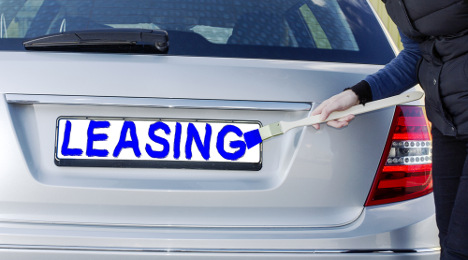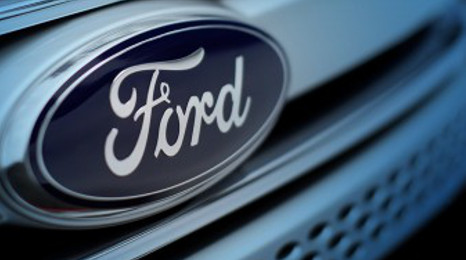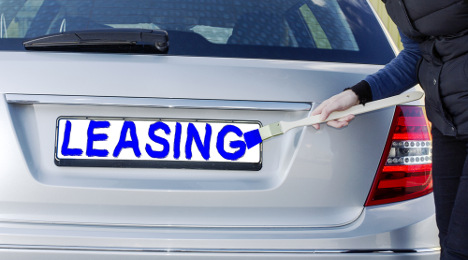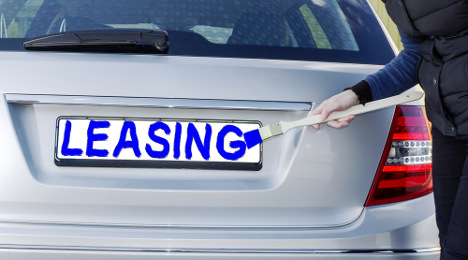Most of the off-lease volume that makes its way to Asbury Automotive Group stores this year will end up as certified pre-owned vehicle inventory.
“They’ll come mainly over a six-month period, and we look at that as an opportunity for us,” Asbury chief operating officer David Hult said during the retailer’s earnings conference call last week.
Turns out, Asbury is likely not alone.
Manheim’s 2016 Used Car Market Report indicates that swelling off-lease volumes should push already record-high certified sales to new heights in coming years.
New lease originations hit a record last year, nearly reaching the 4-million mark and beating the 2009 “cyclical trough” by 2.8 million units, the report said.
With six straight years of rising lease originations, look for off-lease volumes to have a “steady rise” over the next few years.
Manheim Consulting pinpointed off-lease volume for 2015 at 2.5 million units, with 2016 volume projected to reach higher than 3 million. They are then expected to eclipse 3.5 million units in 2017 and approach 4 million in 2018.
In the report, Cox Automotive chief economist Tom Webb (who authored the report) said that 2016 is expected to be another record year for CPO “as growing off-lease volumes provide both the need and ability for further growth.”
He adds in the report: “There is also the desire to grow CPO sales, since they enable dealers to protect gross margins, improve turn rates, or boost F&I and service income. And, when CPO programs are properly structured and effectively marketed by manufacturers and dealers, the programs can provide all three of those benefits simultaneously.”
Webb points that that CPO has “at the least the potential” to keep on greatly expanding, but that will largely depend on marketing from OEMs and dealer CPO profitability.
And keep in mind, the dealer is the one who decides to certify or not.
“And they’re going to make the decision on the basis of whether it’s beneficial to them, therefore it’s got to have a gross that takes care of the additional costs that are involved and are increased financing opportunities or increases the inventory turn rate,” Webb said in an interview with Auto Remarketing last week.
“But facing from the dealer’s standpoint, they have to understand and sell the program to the customer,” he added.
Speaking of consumer awareness, that has been a relatively hot topic as CPO continues to expand. So we asked Webb whether he finds it to be at a healthy level.
“I think there’s a general awareness and understanding, and that’s why it has been successful,” Webb said. “ I would say, however, that understanding is probably not all that deep in terms of, one, the differences between different programs — they’re certainly all not the same.”
It’s almost been three years since Santander Consumer USA began originating leases through Chrysler Capital in order for Fiat Chrysler Automobiles to have a captive to move new metal.
And with those vehicles about to come back to FCA dealerships, SCUSA chief executive officer Jason Kulas likes where the automaker and finance company currently stand.
“The lease business, we’ve had a really positive experience with that so far,” Kulas said when the finance company released its fourth-quarter and full-year performance.
“The leased residuals value component of that has performed in line with our expectations to slightly better. I think that’s attributable to the quality of the vehicles that are the underlying assets,” he continued.
“We think FCA has done a great job of putting great product out there, and so I think we’ve really benefited from that,” Kulas went on to say.
The lease portion of SCUSA’s overall portfolio is steadily growing. The company finished the year with leases constituting 16 percent of SCUSA’s 2015 originations.
For Chrysler Capital, the company generated $5.2 billion in leases for the year, representing a 14-percent gain.
“We like the arrangement we have on lease, because we think it aligns interests in a way that is not unprecedented, but fairly unique, because we share loss performance relative to expectations on lease,” Kulas said. “What that means is sort of we all come to the table, manufacturer and finance company, to make sure we put strong structures in place that make sense.
“So from that perspective, we feel like we’ve been properly compensated for the lease exposure we’ve taken, and the residual experience so far has been good,” he continued. “We can say with some meaning behind it because as you know we’re approaching our three-year anniversary of the launch of Chrysler Capital.
“We’re starting to see a lot of leases come to end of term and roll off, and we’re seeing what the actual residual experience is, and so far it’s been really good,” Kulas concluded.
Lease credit approvals on Swapalease.com decelerated a tad in the final two months of the year — similar to prior years — but still finished 2015 with a “healthy” approval rate of 70 percent, the company said in an analysis released Thursday.
And much like the overall auto industry, lease approvals on the site were still up from prior years. The full-year approval rate for 2014 was 69 percent.
The company said in the analysis that the moving 12-month average had peaked at 77.9 percent in August, but declined following modest dips in November and December.
That also paralleled consumer borrowing trends in the overall economy. Citing The Wall Street Journal, Swapalease said the revised annual rate of increase in outstanding consumer credit during November (4.8 percent) was a 10-month low.
“For what could be a variety of reasons, lease credit approvals have slowed down at year end over the last few years,” said Scot Hall, executive vice president at Swapalease. “Looking ahead into the spring, it will be interesting to see if we experience the same level of monthly volatility as we have the past few years.”
For the time being, the 70-percent mark reached in 2015 hits what Swapalease called the “sweet spot for ‘healthy.’” Typically, the “unhealthy” fault line would be 62 percent, the company said.
Vehicle sharing programs are gaining popularity these days, and now the Blue Oval is joining the pack.
Through the new Ford Motor Credit Co. leasing pilot program, families and small groups of friends and neighbors can now share a Ford vehicle, the automaker announced Monday.
Ford Credit Link — which is being piloted for Ford Credit customers in Austin, Texas — is designed to serve customers who may not need a vehicle full time, but still want access to their own set of wheels.
Starting next month, Ford Credit is offering leases on Ford vehicles to self-organized groups of three to six people.
The 24-month group leases will be available at three Austin dealerships: Covert Ford, Leif Johnson Ford and Maxwell Ford.
“People already are sharing everything — from books to homes,” said David McClelland, Ford Credit executive vice president, marketing and sales. “We’re seeing the potential for a shift from a single consumer paying for a single vehicle to several people sharing costs and benefits. Ford Credit Link makes Ford vehicles more readily available to people who may not want or need their own vehicle but have mobility requirements that must be met.”
Here’s how it works:
To organize vehicle use, lease groups can reserve drive time, check vehicle status, keep up with maintenance, communicate with each other, view their account, and make payments through a vehicle plug-in device and app.
“Austin is a progressive city with a rich demographic mix. It has effective public transportation, and consumers who use various mobility options but may not need a full vehicle lease to meet their transportation needs,” said McClelland. “This combination makes Austin a good place to test Ford Credit Link.”
Lincoln makes managing lease miles easier
Lincoln announced a new leasing pilot on Monday, as well. Its program rewards lessees for unused miles on their contract.
Lincoln Automotive Financial Services is testing new ways to help customers manage lease mileage and earn up to $1,000 toward their next Lincoln vehicle.
By the end of this month, qualified lease clients across the country will be invited to join the leasing pilot, which the company explained allows customers to monitor mileage daily and predicted lease-end mileage through mobile and online updates.
Lincoln Miles participants will receive $100 to $1,000 in credits for unused miles on their lease contract, which then can be applied toward a future Lincoln lease or purchase.
“Clients will be able to see at any time where they stand compared with the mileage chosen on their lease agreement – along with a regularly updated projection of their lease-end mileage,” said Lee Jelenic, director of future digital and product development. “This can help clients manage their miles and earn credits for unused miles.”
Invitations for the pilot are going to select clients who have 10 months to 25 months left on their lease agreements, are up to date on their lease payments, and are driving a Lincoln MKC, MKX or MKZ with an embedded modem.
Stress-testing has had a profound effect on risk management practices within banks. In the wake of the global financial crisis, regulators around the world instituted policies designed to substantially remove the possibility of large-scale bank failures.
Capital reserves at banks have been appreciably raised, and regulators are applying a considerably greater amount of scrutiny to the way banks monitor and predict risk.
Although stress-testing is a young discipline and will surely change radically over the next decade, the procedures being put in place hold the potential to transform the way financial institutions around the world are managed.
In the form implemented by U.S. regulators, stress-testing involves trying to infer the likely performance of a portfolio assuming that a specific, dire macroeconomic scenario starts to unfold.
Most large banks have active auto loan portfolios. Therefore, a great deal of effort has been applied to the problem of stress-testing default probabilities, credit losses, loan recovery rates, lending volumes, and revenues associated with the management of auto portfolios.
Leases, although rarer in the banking industry, have also demanded increased analytical scrutiny. The shift into leasing has added residual forecasting and return rate probability to the mix of factors to be stress-tested by the auto industry.
The purpose of this article is to consider some of the lessons learned from research conducted to stress-test bank auto portfolios. This is not meant to be a general discussion of stress-testing, per se, but a summary of some elements that are quite unique to the world of auto finance. Auto loans and leases, like mortgages, are secured by collateral.
Unlike property, however, autos are mass produced, depreciating products with a relatively short life span. These features change the way auto loans and leases behave in the context of a downside macroeconomic event.
This article will set out by considering, at a high level, how auto loans tend to perform in recessions. Data for the 2001 and 2008-2009 events will be compared and contrasted with a view toward trying to predict how auto portfolios might be expected to behave in a future recession.
We will consider as part of this discussion the effect of fiscal stimulus packages such as cash for clunkers and whether the auto industry could expect a repeat performance in future recessions. We will conclude by asking whether a subprime-mortgage style crisis could conceivably affect the future auto industry.
Pro and counter cyclicality
The 2001 and 2008-2009 recessions were different beasts. The 2001 event was tamer, having its origins in the dot-com bust and 9/11; the Great Recession was triggered by a banking sector crisis, the likes of which had not been seen since the 1930s. The auto sector, it is safe to say, was not a proximate cause of either event.
The performance of the new-car industry was markedly different in each event. Coming into the 2001 recession, new-car sales were climbing steadily, reaching a peak of close to 19 million annualized units around the turn of the millennium.
As the recession started to bite, generous incentive packages offered to customers, coupled with a strong “nesting” instinct in the wake of 9/11, acted to keep unit sales of new vehicles relatively high. If new-car sales were the only economic indicator you considered, you would be unaware that the 2001 recession even happened.
The Great Recession, by way of contrast, saw new-car sales crater. In early 2009, during the immediate aftermath of the Lehman Brothers collapse, monthly sales fell to around 9 million annualized, barely half the precrisis level. Some attribute the sales decline to problems at GM and Chrysler, and these events certainly did not mitigate against the dire impact of the recession.
It can be noted, though, that unaffected manufacturers also suffered steep reductions in sales. It is fair to say that Toyota and Ford could have sold more to unsatiated GM customers had the demand for their vehicles actually been present in the economy. The new-car industry has been fighting back over the past six years but it took until 2014 before pre-Great Recession sales numbers were observed once more.
Although consumers continued to refresh their vehicles during the 2001 recession, foregoing things such as vacations and international travel for a nicer ride, Great Recession consumers clearly opted to delay the purchase of new or newer vehicles. This had a decidedly negative, deep impact on auto manufacturers and new-car dealers.
For financiers, meanwhile, the recession was a relatively mild, short-lived event. By early 2010, auto default rates were already at prerecession levels.
Recoveries on those loans that were in default were low because used-vehicle prices were rising at breakneck speed. At least one bank in the knowledge of the present author saw recoveries exceed gross credit losses during the latter days of the Great Recession.
It behooves us to ask why the recession was so mild and short for some auto financiers.
The fact that the 2008-2009 recession started in mortgage was, in a roundabout way, a positive for the auto finance industry. With house prices falling rapidly in most parts of the country, consumers’ normal resilience in paying their mortgage through tough times crumbled rapidly.
If we consider delinquency rates on mortgages, car loans and credit cards it becomes immediately clear that, prior to 2009, mortgages consistently had the lowest rate of nonpayment, followed by auto and credit cards in third place.
The subprime crisis led to a huge rise in mortgage delinquency and default, to the point where, by far, mortgage was the most defaulted form of consumer loan (in terms of percent of dollar volume outstanding) by late 2009. With house prices falling, troubled consumers overwhelmingly decided to favor the car loan over the house. You would get terrible gas mileage if you ever tried to drive the house to work.
It turns out that if home foreclosure ever becomes inevitable, it gives consumers an unexpected source of disposable income that can be applied to other loans.
It is a fairly callous form of accounting, but a missed $1,600 mortgage payment represents four $400 car payments or 16 $100 credit card installments for a troubled mortgagee.
The second relevant point is that the decline in new-car sales in late 2008 and early 2009 inevitably led to a dearth of used-car supply in early 2010. This phenomenon is well known in the auto industry, though our view is that the time lapse between new-car sales and the used-car price surge is a fair bit shorter than the view commonly held in the industry. If the dominant form of transaction, for example, is a three-year lease, it might be reasonable to expect the gap between these events to be about 36 months.
The empirical data, however, show that new-car sales lead used-car prices by around 12 to 18 months; this pattern has been consistent over the past few decades. These supply dynamics are overwhelmingly responsible for the surging used-car prices seen in 2010 and the thin losses observed by many in the auto finance sector during the same period.
In a hypothetical future recession, new-car sales is the key variable to track. If sales remain aloft during the recession, financiers and remarketers should brace for a period of low used-car prices about a year after the onset of recession.
If new-car sales crater, however, the industry can take succor in the fact that used-vehicle supply will contract, and prices will rise, thus cushioning the back end of the recessionary period.
Fiscal policy
A short side note relates to the issue of fiscal stimulus during a recession. Whether or not you agree with the concept of the government taking on the role of “spender of last resort” during a deep recession, it is still valid to consider the appropriate form of stimulus should such an intervention ever be deemed necessary.
During the last recession, the auto industry was supported by bailouts of GM and Chrysler and by the $3 billion cash four clunkers scheme that triggered some to update their ancient vehicles during the deepest part of the recession.
The empirical evidence on the success of cash for clunkers is thin. A cynical analyst could line up the 2009 scheme and the 2010 price surge and say that X caused Y.
A less cynical, data-driven person certainly could not reject this assertion; future empiricists may be able to weigh in on the issue of exactly how much of the 2010 price surge was due to cash for clunkers market activity. Equally certainly, we can say that the scheme did not hurt used-car price dynamics during this time.
The Chrysler and GM bailouts were certainly positive for auto industry employment during the recession, though the longer-term effects of the bailouts will likely be highly negative.
Our view is that if fiscal stimulus is to be enacted, the auto industry is an excellent candidate for support. Car use is close to universal in the U.S., and the auto sector employs many millions of Americans across an enormous range of household income levels.
It is difficult to find other industries with better stimulus credentials in terms of progressivity or heavy employment concentration.
The next time recession looms therefore, assuming pro-stimulus legislators are in place, it is completely reasonable to believe that stimulus funds will flow in the direction of the auto sector.
Can it happen to us?
The discussion until now has focused on the effects of externally triggered recessions on the auto industry. History shows that recessions are caused by structural imbalances or bubbles in key sectors of the economy and that economic pain is highest in the sector where the imbalances first appeared. It would therefore be prudent of us to consider the likelihood that the auto industry will be the root cause of the next recession.
As mentioned already, the auto industry is certainly big enough to cause the U.S. economy to topple. Some banks are exposed to auto portfolios that are consequential enough to trigger bank failure. The auto sector, like the mortgage industry, uses securitization in high volume; it was these forces that many blame for the subprime crisis that triggered the Great Recession.
Despite the presence of these preconditions, our view is that an auto-induced recession is highly improbable. One of the commonalities observed in previous financial recessions was the existence of speculative asset price bubbles.
During the 2005-2006 housing boom, for instance, many individuals and companies were buying real estate with zero yield on the expectation of reaping capital gains upon sale of the asset.
House prices, after all, never, ever fall! At a basic level, this form of psycho-pathology is not plausible in the auto sector.
Although it is true that some highly specialized companies exist to arbitrage minor market inconsistencies, most sane people do not expect to make a profit when buying and selling used vehicles unless they happen to be auto dealers. Cars are mass-produced, depreciating assets that do not lend themselves to speculation regarding potential capital gains.
Some may argue that speculation is possible by people operating within the world of asset-backed securities. This is true, but only up to a point.
Someone analyzing a securitized deal could quite easily and accurately determine a theoretical maximum value of the collateral that cannot be breached under any sensible circumstances. If an investor were to pay such a price, or anything remotely similar, they would cease to be investors after a short time.
Given the size of the industry, one does not want to completely rule out the possibility of an auto-caused recession. If such a black swan exists, it is far more likely that the production and manufacturing side of the industry is its natural habitat. The auto-induced recession swan does not swim on the financial side of the lake.
Conclusion
The auto sector has many characteristics that make a subprime-style collapse unlikely.
The shorter half-life of cars relative to houses, the fact that vehicle production can be initiated or called off relatively quickly, that auto markets are inherently non-speculative, and the fact that used-vehicle price dynamics tend to be countercyclical all support the notion that auto recessions are unlikely to linger.
This is not to say that the early days will not be dark—they will be. The evidence, though, suggests that recovery will tend to be robust, ongoing and earlier than that of the rest of the economy.
The broader point is that the onset of bank stress-testing has led to a deeper and clearer understanding of the macro forces acting on the auto industry. Expect future stress tests to yield many interesting insights for auto industry insiders.
Tony Hughes is managing director of credit analytics at Moody’s Analytics.
With leasing extremely popular with consumers and certified pre-owned models turning at a record pace, a marriage between the two markets came into the conversation again when American International Automobile Dealers Association hosted a webinar on Tuesday, reviewing this year and looking ahead to 2016.
As two of the event’s experts took turns touting the upbeat prospects for both the leasing and CPO markets, Michael Collins of Dealertrack Technologies still wasn’t ready to announce nuptials that might lead dealers and finance companies to cheer during a celebratory reception of moving modestly used metal via a lease.
“I’m not sure banks would consider it,” Collins said about the prospect of CPO leasing gaining a major market share.
“As an old leasing guy from years ago, I certainly would considerate it,” added Collins, who is now senior vice president of lender and F&I solutions at Dealertrack.
Collins did touch on what industry elements need to be in place if CPO leasing ever could gain momentum.
“I think if you’ve got predictability in used-car prices and predictability in supply — and I think we do. With relatively stable pricing, I think a CPO lease opportunity exists,” he said.
“I don’t know how big it is. I don’t know how much the captives may want to go after it. I think it’s there,” Collins added.
Collins went on to mention that new-vehicle leasing is especially important to the industry seeing vehicles roll over the curb in 2016. Experian Automotive reported that leasing accounted for nearly 27 percent of all new-vehicle transactions in the third quarter of this year, up from 24.7 percent the previous year. Collins said he can see that level approaching 30 percent; perhaps even surpassing it.
“It’s a response to wanting to keep monthly payment as flat as we can make them,” Collins said about the industry pulling the leasing lever to put consumers into vehicles.
“This is an industry that is driven by consumers who are driven by payment. There’s no reason in our view why leasing wouldn’t continue to slowly increase,” he added.
ADESA Analytical Services chief economist Tom Kontos also participated in Tuesday’s webinar and agreed about the penetration new-vehicle leasing might generate going forward.
“The prices of new cars continues to go up,” Kontos said. “The demands for that vehicle to have more technology, more safety features, better gas mileage, that all adds to the cost, as well.
“It just makes it more sensible going forward to lease half a car than purchase a whole car for a good portion of the population,” he continued.
Whether it’s leasing a new vehicle — or perhaps one day a CPO model — Kontos maintained how critical the placement of residual values is.
“I distinguish between residual values on lease contract and actual wholesale market values,” he said. “Definitely wholesale market values will have downward pressure.
“The residual values were set three years ago so in terms of residual value losses, that all depends on how the captive finance companies and the banks set their residuals three years ago,” he continued.
“If they set them too aggressively based on the strength of the market two or three years ago, then they’re really going to see some fairly significant residual value losses in 2016 and 2017,” Kontos went on to say. “If they were more conservative and taking into account the growth in volume that was really foreseen back then, then the residual value losses will less notable.”
VehicleXchange LLC announced Monday that it has added automated GM Financial pre-qualification capabilities to its service lane lead solution.
The tool, launched by Pearl Technology Holdings in January and otherwise known as “VX,” now allows dealers to pre-qualify customers through GM Financial within seconds.
The VX system utilizes pre-screening technology from Experian to allow dealers to calculate a customer’s equity in their vehicle as well as allowing consumers to view all vehicles in a dealer’s inventory that they are pre-qualified to purchase.
Another aim of VX is to help customers find “improved” terms via manufacturer incentives and estimated payments, allowing customers to upgrade their vehicle and maintain the same or lower monthly payments.
Allowing for automatic communication to consumers on the dealer’s behalf, the VX system can turn manufacturer incentives into targeted marketing campaigns within 24 hours of release.
The solution has achieved 1,300 subscriptions from dealers since it launched at the beginning of the year. To learn more about VX, click here.
Looking back on November’s wholesale results, the picture painted is very much similar to previous months: Average auction prices were up month-over-month but flat year-over-year. And the uptick was largely due to truck prices.
Wholesale vehicle prices in November averaged $9,883, an increase of 1.1 percent compared to October. This was 0.1 percent higher than year-ago figures.
This was reflected in ADESA Analytical Services’ monthly analysis, provided by Tom Kontos, who pointed out in his Kontos Kommentary that the “strong retail demand,” especially in the certified pre-owned area, is what is maintaining the price levels despite the increasing supply.
“In short, data and other analysts are increasingly validating comments made here for many months about inevitable price softness from growing used-vehicle supply,” Kontos said. “Also as noted repeatedly here, the major saving grace keeping prices from falling further and sooner has been strong retail demand, especially for certified pre-owned vehicles.”
Kontos also pointed out that the softer pricing conditions are hitting institutional consigners more than dealers, “who have the option of retailing vehicles and only wholesaling units for which they can obtain attractive sales prices.” He said this advantage was show via strong month-over-month and year-over-year auction performance for dealer consignors.
To that end, the results for November show that the average wholesale prices for used vehicles remarketed by manufacturers were up 3.1 percent month-over-month and 4.3 percent year-over-year — and Kontos drew attention to the fact that, “manufacturers held out for their asking prices by often selling less than 50 percent of the units offered.”
Looking at vehicles in the 3-year-old segment, which Kontos used as a proxy to represent off-lease vehicles, the prices were down 3.2 percent month-over-month in November, and 9 percent year-over-year.
Utilizing data provided by NADA, Kontos showed that used-vehicle sales by franchised dealers increased 4.1 percent year-over-year while independent dealers saw their sales increase by 5.4 percent, both of which were down month-over-month.
According to figures from Autodata, CPO sales decreased by 13.8 percent month-over-month in November and 4.7 percent on a year-over-year basis. Despite that drop, overall sales remain up 8.7 percent year-to-date.
The fact that consumers might pay different prices for the same cars based on their gender may seem a bit wonky, but according to consumer lease marketplace Swapalease.com, the data shows this assertion might just be true in some cases.
But the data might not shake out how one might expect if you’re going by outdated stereotypes. If you expect men to have more negotiating power than women, think again, according to Swapalease’s findings.
The site’s recent analysis shows women often have lower monthly payments on similar vehicles than men. And although monthly payments varied from vehicle to vehicle, women appear to be consistently spending less each month on their cars.
“When it comes to cars and price negotiation, most people probably think that men have the upper hand and ability to drive a lower price,” said Scot Hall, executive vice president of operations at Swapalease.com. “But according to data pulled from the Swapalease.com marketplace, women are actually getting the better deal on many of today’s popular vehicles, lessening the gender gap in shopping for cars.”
According to Swapalease’s analysis, men paid more for popular vehicles in the sedans segments, including the Toyota Corolla S and Camry LE, where men were found to be paying 17 percent more than women. On SUVs, such as the Ford Explorer XLT and Chevy Equinox, men were paying 3 percent more than women per month.
The story is a bit different on the luxury side of the market. The site found that women, on average, pay 7 percent more for their luxury vehicles, including the Lexus RX350 and BMW Series 335i.
Interestingly, on average, men aren’t just paying more for their cars each month, but they are also offering more incentives on the site to potential buyers. On the Swapalease.com site, on average, men are offering $446 as incentives to buy their vehicle, which is 227 percent more money than women are offering ($137 as a lease incentive).
After gathering its third-quarter data, Experian Automotive spotted the highest percentage of vehicles leased since the company began tracking the data publicly in 2006.
While leasing is immensely popular with consumers who want a shiny, new ride at a more affordable price, one national analyst acknowledged there are “some risk factors to keep an eye on as we head into 2016” when considering what might happen to the industry as more units roll over the curb connected to a lease.
First, here are the numbers according to the Q3 2015 State of the Automotive Finance Market report released on Wednesday.
Experian reported that leasing accounted for nearly 27 percent of all new-vehicle transactions in Q3, up from 24.7 percent the previous year.
Findings from the report also showed that the average monthly lease payment was $398 during the quarter, up $1 from a year ago.
“As the price for a new or used vehicle continues to rise, leasing has become a more viable financing option for consumers looking to maintain an affordable monthly payment,” said Melinda Zabritski, Experian’s senior director of automotive finance.
“While consumers can save an average of $84 per month by leasing rather than taking out a loan on a new vehicle, they should make sure leasing fits their lifestyle,” Zabritski continued. “Oftentimes there are mileage caps and other considerations that consumers should familiarize themselves with before entering into a leasing agreement.”
And judging by what was shared in a conference call this week by Alec Gutierrez — senior market analyst of automotive insights at Kelley Blue Book — automakers likely aren’t going to expand mileage parameters or other lease components to protect values as more off-lease units eventually land in the wholesale space. The latest estimate has off-lease volume growing by 800,000 units next year.
During a monthly call Gutierrez joins with Autotrader, the KBB expert also mentioned the expectations of the Federal Reserve potentially making a long-awaited move impacting interest rates. “With rising inventory at auction, that puts some pressure potentially on resale values and in turn residuals, which coupled with rising interest rates could make leasing a bit more of a costly proposition for the manufacturers,” Gutierrez said.
“That ties back into the need to continue to pump money back into incentives,” he added.
Despite what money OEMs might throw on the hood, rising vehicle prices also have given way to record loan amounts for both new and used vehicles.
During the third quarter, the average amount financed for a new vehicle was $28,936, up $1,137 from the previous year.
The average amount financed for a used vehicle was $18,866, up $290 over the same time period.
Furthermore, Experian pointed out the gap between new and used loan amounts also has grown. On average, consumers finance $10,070 less on a used vehicle than on a new one.
Extending loan terms is another method consumers turned to in order to keep monthly payments low. During Q3, Experian determined the percentage of consumers who took out new and used vehicle loans with terms between 61 months and 72 months reached all-time highs.
For new vehicles, approximately 44 percent took out 61- to 72-month loans, and more than 41 percent financed a used vehicle for the same duration.
Analysts noticed the percentage of consumers extending their loans even longer also has increased.
Loans for new vehicles extending 73 to 84 months increased 17.1 percent over the previous year, reaching a Q3 record high of 27.5 percent.
Used-vehicle loans extending in the 73- to 84-month term, however, reached an all-time high of 16.2 percent (a 12-percent increase over the previous year).
Subprime originators gain more market share in Q3
As captive activity also registered gains, Experian highlighted that what it classifies as finance companies — institutions that don’t hold customer deposits but get most of their business from consumers with subprime and deep-subprime credit — gained a healthy amount of market share year-over-year during the third quarter.
The finance company market share reached 13.34 percent in Q3, up 6.4 percent from the previous year.
Meanwhile, Experian indicated one of the biggest shifts in the automotive lending industry during Q3 was the resurgence of captive lenders — the lending companies owned by vehicle manufacturers.
In the third quarter, captive lenders financed 51.6 percent of new-vehicle loans, up from 36.8 percent in Q3 2011. This gain represents the largest market share of new-vehicle financing for captives since the recession.
Market share findings for other lending types show commercial banks still holding the largest share for new and used vehicle loans combined, at 34.7 percent.
“Captive lending has made a comeback since suffering a steep drop-off caused by declining new sales and lender-type shifts during the recession,” Zabritski said.
“This is good news for manufacturers, as their captive finance companies often provide an additional source of revenue as well as a strong pipeline to credit for their dealer networks,” she continued
Experian mentioned five other interesting findings from its Q3 data, including:
• Consumers continue to rely on financing; the percentage of new vehicles financed reached an all-time high of 86.6 percent.
• The average credit score for a new vehicle loan fell to 710, the lowest since Q3 2007.
• During Q3, the average monthly payment for a new vehicle was $482, up $12 from the previous year.
• The average monthly payment for a used vehicle reached $361, an increase of $3 from a year ago.
• The average interest rate for a new vehicle hit 4.63 percent, while the average interest rate for a used vehicle reached 8.76 percent.
Editor Joe Overby contributed to this report.












